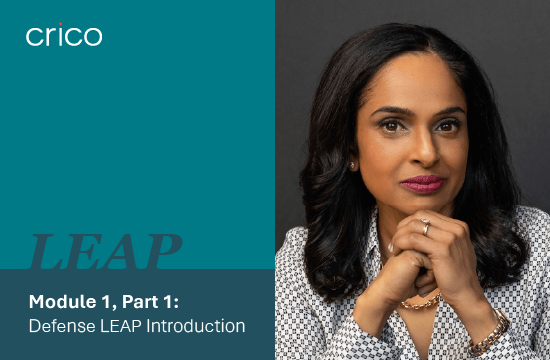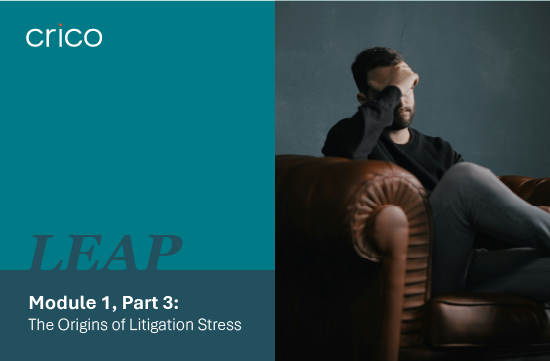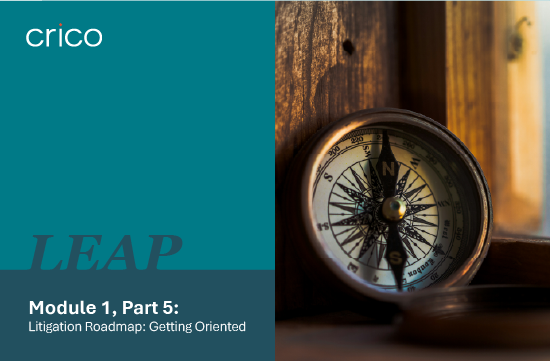This module is comprised of six videos. We recommend viewing these over the duration of a week. There is also a course outline available for download.
Introduction and Course Overview, 7:53
LEAP stands for Litigation Education and Performance. This course will draw from a wide body of experience: from tort law and legal performance techniques to cognitive neuroscience, behavioral therapy, coaching, resilience training, and maybe a couple of wacky things I've tried along the way, too. I'm going to pack a LOT into these eight modules, and I thank you for this opportunity to teach you what I've learned.
Dr. Pensa’s Litigation Story, 9:42
Dr. Pensa shares the story of her own 12-year-journey through malpractice litigation—and how in the latter years she realized that there are other, more helpful and constructive ways for physicians and other clinicians to approach litigation.
The Origins of Litigation Stress, 14:09
As doctors, we’re used to stress. We’re often really good at performing in high pressure situations. We’ve taken high stakes exams and taken care of challenging cases.
Why is litigation stress different?
You’ve Been Served: The First Do’s and Don’ts 20:44
This video describes what you should know about service of process ('getting served' or 'receiving notice' of a lawsuit) and the initiation of litigation. Dr. Pensa explains several do’s and don’ts around this time period.
Litigation Roadmap: Getting Oriented, 14:15
YOU ARE HERE. You know those signs at the mall or in a recreation area that give you the big red arrow of where you are, and then you can figure out where you’re going?
In this video we’ll talk briefly about the steps it took to get you to this big red arrow place. Once we’re oriented (keeping this analogy alive!), we’ll talk about more of the map, the players we'll be interacting with on the way, and how it’s decided which destination we’re going to.
Your Two Big goals, 5:30
Now you have some foundational knowledge. So what are we doing for the rest of these modules? In this program, I have two basic goals for you:
Goal 1: to acquire insight and skills that help you play a meaningful role in your defense
Goal 2: to process and move through the distressing emotions surrounding the adverse event or and litigation itself.








